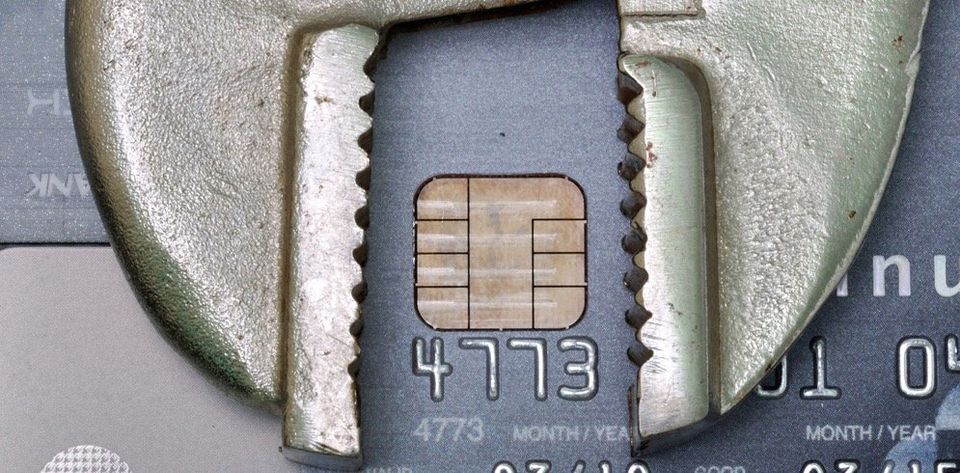6 Tips on How to Repair, Increase and Maintain Your Credit
Michael Hallett • January 13, 2016

Credit scores are like report cards for grown‐ups. The score you get ranges from 300 to 900. Your score indicates your creditworthiness to potential lenders, banks, landlords, insurance companies, and even to some employers. The higher your score the better.
1. Get a Copy of Your Credit Report
Make an inquiry once a year, twice is much better. If you are planning on purchasing anything that requires a credit check, keep track of your credit. This is something that is 100% in your control. As a consumer you have ability to make a soft/consumer inquiry to Equifax as many times as you want without it affecting your score. Here is a link to Equifax. If something doesn't look right, contact the creditor immediately. Don't wait to report an incorrect or fraudulent transaction. Is there an outstanding collection? If so deal with it immediately, and by that I mean pay it. Then argue to get your money back. Do not leave this on your credit report hoping that it will disappear. No matter what, the collection will not be removed until it's paid unless taken to litigation. Once dealt with it will still take months to recover the points lost and 6 years to fall off your credit report.
2. NEVER Miss a Minimum Payment
Because this attributes to 35% of your overall score, delinquencies have the biggest negative effect on your credit score. If you have overdue bills, make the necessary arrangements with your creditors. They would much rather work with you than file collections against you. If you can't pay it all back, it's better to pay some.
3. Don’t Close Unused Credit Card Accounts
Got a credit card that you have had ten years and hardly use? Keep it. It takes 12 years of history with the same specific card in good standing to crack 800 and enter that top 2% tier of quality credit. Cancelling a card can actually assist with lowering your score. Keep the old cards and only use them occasionally so the issuer doesn’t stop reporting your information to the credit bureaus. Having a long credit history helps increase your score. Don't jump around to credit providers. Most 'large' providers have several different products. There is likely one that will fit your needs.
4. Never Max Out Your Credit Cards
A good rule of thumb when considering to build your credit is to keep the balance at or below 30% of the limit. Furthermore, a balance of 50% of the limit will maintain existing levels and over 75% will start to decrease it. NEVER exceed the limit, by even a $1.
5. Don’t Look For More Credit
Don't shop around for credit or open several credit accounts in a short period of time. It raises alarms at credit bureaus and financial institutions, especially when you don’t have a long‐established credit history. Work with your existing creditors, as there is more relevant history. They are more likely to work with you, especially if you are looking to resolve some credit hardship(s). Always ensure you give your permission before allowing a credit check.
6. Rule of 2
Ideally, you want to have 2 sources of credit solely in your own name for a minimum of 2 years with at least a $2,500 credit limit. This would be either 2 credit cards or one credit card and a line of credit. Ensure this is in addition to any joint accounts. Joint credit is only reported to the primary credit holders credit bureau and will not have any positive effect on the co-account holder.
If you ever have questions about your financial situation or want to discuss your credit score with me, contact me anytime!
SHARE
MY INSTAGRAM
Mortgage Brokering meets mountain biking and craft beer. A couple months ago I set for a bike ride with the intention of answering few mortgage related questions, mission accomplished. Any good bike ride pairs nicely with a tasty beer which we enjoyed @parksidebrewery. Hope you see the passion I have for brokering, biking and beer. @torcabikes #mountainbikingmortgagebroker
TEASER alert...at thats what I think they call it in the business. Years ago a wrote a blog called BEERS BIKES AND MORTGAGES. I some how (in my head) blended all 3 topics into 1 blog. Simply put, I enjoy aspects of all 3 with each of them providing something different. I re-united with the talented Regan Payne on a project that I think will shed a bit more light on who I am and what I do. #craftbeer #mountainbike #mortgagebrokerbc #dlccanadainc
I saw this hat on Instagram, that very moment I knew I needed it. As a BC boy born and bred The Outdoorsman hat needed to be added to my collection. As someone who loves BC and most things outdoor, I’m now glad I have a cool hat to wear and fly the flag of BEAUTIFUL BRITISH COLUMBIA. It will be in my bag for all post-exploration celebratory cold pints. If you want to check them out or add one to your collection go to @nineoclockgun ...and yes my facial hair matches the hat as well.
View more

Bank of Canada maintains policy rate at 2.1/4%. FOR IMMEDIATE RELEASE Media Relations Ottawa, Ontario December 10, 2025 The Bank of Canada today held its target for the overnight rate at 2.25%, with the Bank Rate at 2.5% and the deposit rate at 2.20%. Major economies around the world continue to show resilience to US trade protectionism, but uncertainty is still high. In the United States, economic growth is being supported by strong consumption and a surge in AI investment. The US government shutdown caused volatility in quarterly growth and delayed the release of some key economic data. Tariffs are causing some upward pressure on US inflation. In the euro area, economic growth has been stronger than expected, with the services sector showing particular resilience. In China, soft domestic demand, including more weakness in the housing market, is weighing on growth. Global financial conditions, oil prices, and the Canadian dollar are all roughly unchanged since the Bank’s October Monetary Policy Report (MPR). Canada’s economy grew by a surprisingly strong 2.6% in the third quarter, even as final domestic demand was flat. The increase in GDP largely reflected volatility in trade. The Bank expects final domestic demand will grow in the fourth quarter, but with an anticipated decline in net exports, GDP will likely be weak. Growth is forecast to pick up in 2026, although uncertainty remains high and large swings in trade may continue to cause quarterly volatility. Canada’s labour market is showing some signs of improvement. Employment has shown solid gains in the past three months and the unemployment rate declined to 6.5% in November. Nevertheless, job markets in trade-sensitive sectors remain weak and economy-wide hiring intentions continue to be subdued. CPI inflation slowed to 2.2% in October, as gasoline prices fell and food prices rose more slowly. CPI inflation has been close to the 2% target for more than a year, while measures of core inflation remain in the range of 2½% to 3%. The Bank assesses that underlying inflation is still around 2½%. In the near term, CPI inflation is likely to be higher due to the effects of last year’s GST/HST holiday on the prices of some goods and services. Looking through this choppiness, the Bank expects ongoing economic slack to roughly offset cost pressures associated with the reconfiguration of trade, keeping CPI inflation close to the 2% target. If inflation and economic activity evolve broadly in line with the October projection, Governing Council sees the current policy rate at about the right level to keep inflation close to 2% while helping the economy through this period of structural adjustment. Uncertainty remains elevated. If the outlook changes, we are prepared to respond. The Bank is focused on ensuring that Canadians continue to have confidence in price stability through this period of global upheaval. Information note The next scheduled date for announcing the overnight rate target is January 28, 2026. The Bank’s next MPR will be released at the same time.

Following several challenging years, British Columbia’s housing market is beginning to stabilize. Prices, which experienced downward pressure in 2024–2025, have largely plateaued, with some areas showing modest gains. The recent Bank of Canada rate reduction to 2.25% has lowered borrowing costs, improving affordability and supporting market activity. Across the province, housing supply is gradually increasing. Builders are delivering more condos, townhomes, and single-family homes, easing some supply constraints. Meanwhile, population growth, fueled by domestic migration and international immigration, continues to support long-term housing demand. Key Statistics Home sales: BC home sales declined slightly in 2025 by approximately 1.1% to 73,650 units but are projected to rebound in 2026 by around 8.8%, reaching roughly 80,150 units. Average home price: The provincial average price dipped modestly by 0.9% in 2025 to $972,800, with forecasts projecting an increase of 3.2% in 2026 to approximately $1,004,000. Benchmark home price: As of April 2025, the BC benchmark home price stood at $953,500, down 1.3% year-over-year. Listings and inventory: Active listings are expected to exceed 40,000 units in 2025, the highest in more than a decade. Market Forecast 2025: Market remains relatively flat, with modest declines in sales and prices. 2026: Sales and prices begin to recover, with modest upward trends. Early 2027: Market stabilizes, reflecting measured growth and improved affordability. Regional differences will continue. Urban condo markets may see slower price appreciation, while suburban and smaller communities with limited supply could experience stronger gains. What This Means for Buyers and Homeowners Prospective buyers: 2026 is an opportunity to enter a more balanced market with lower interest rates. Current homeowners: Refinancing or mortgage renewal could be advantageous in this period of slightly lower rates. Investors: Localized analysis is critical, as neighborhood inventory and rental demand will determine returns. Bottom Line: BC’s housing market is shifting from a cooling phase toward a period of gradual recovery. Lower interest rates, steady population growth, and increased housing supply point to a healthier, more sustainable market. Buyers, homeowners, and investors should plan strategically, recognizing that while growth is returning, the pace will be measured and regionally variable.







































































































